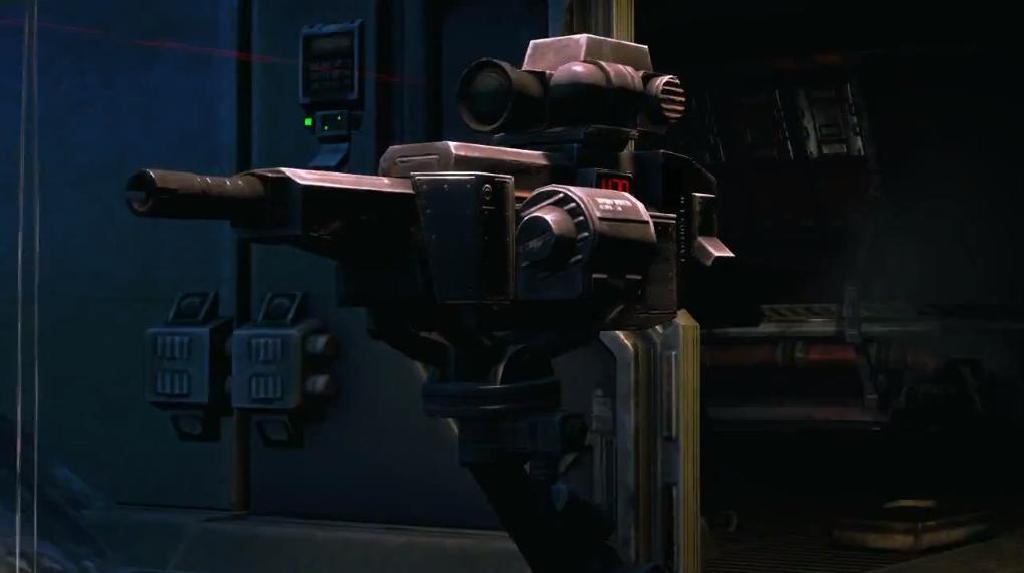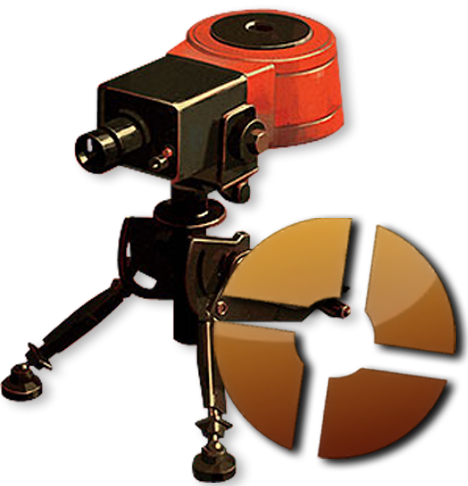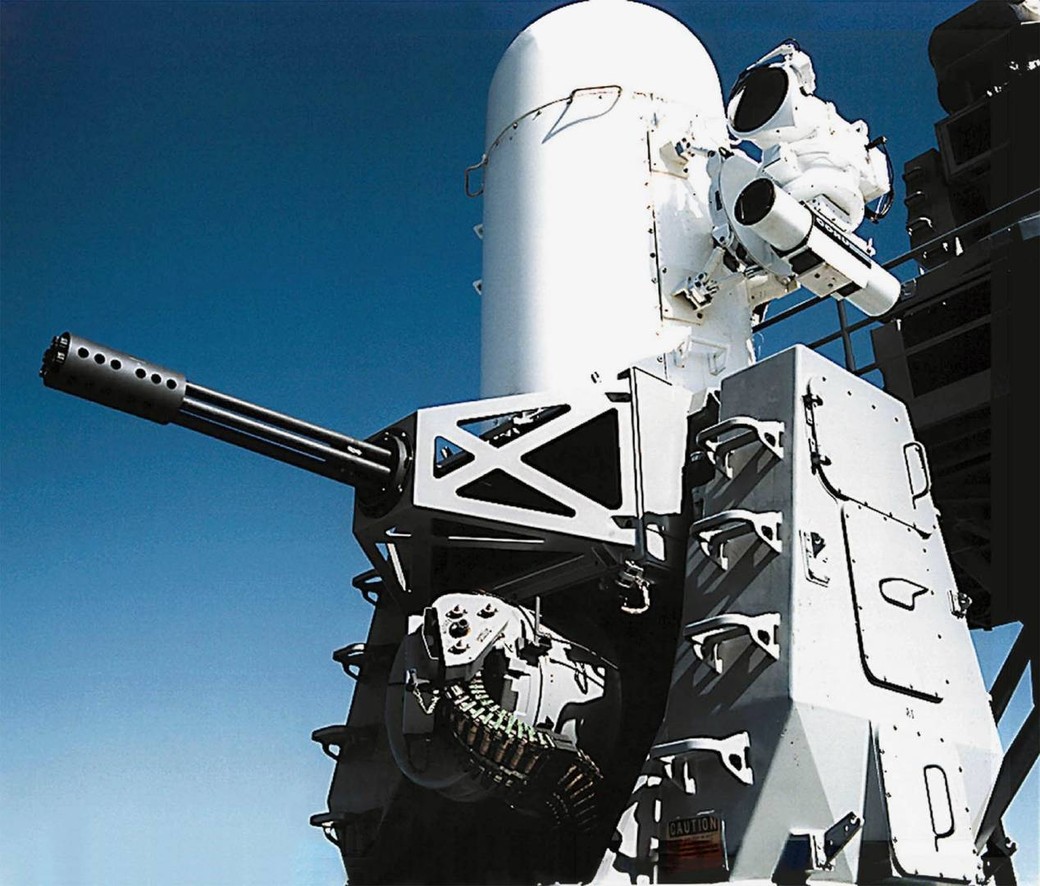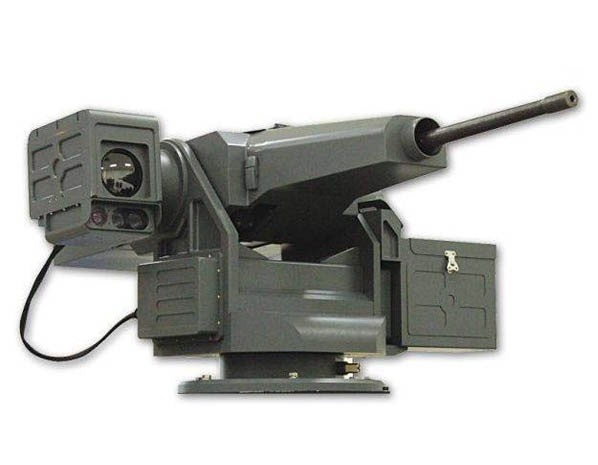
Putting the “Science” in “Science Fiction” – Sentry Guns
Sentry gun is a catchall name for an automated robotic weapon system that is used in a defensive role, either protecting an area from intruders or destroying incoming projectiles. These devices are common in science-fiction and especially video games, and range from the homemade tripod mounted guns built by Team Fortress 2’s Engineer to the much more sophisticated versions shown in the deleted scenes of Aliens. At its core, a sentry gun seems like a very simple system, a weapon attached to an articulated mounting and a system that allows it to track targets. However, as is often the case when discussing science-fiction technologies, it is much harder to create a true robotic sentry in real life than it appears.

http://www.memeconstruct.com/2012/10/tf2-pin-up-team-fortress-2-spray-give.html
The core physical structure of a sentry gun is easy to build, but the sensors and software are a more difficult prospect. The main difficulty with creating a sentry gun system is that it must be able to identify the difference between allies and enemy targets, and do so quickly enough to destroy targets before they can destroy the sentry gun. How sentry guns determine targets is rarely addressed in science-fiction, but real-world examples generally rely on IFF (Identification Friend or Foe) signals to confirm if a potential target is friendly. If an IFF signal is not received, then the target is identified as not being friendly (although this does not necessarily mean it is an enemy).
The main use for modern sentry guns is in CIWS (Close-In Weapon Systems) – short-range computer-controlled weapons which are used to destroy incoming projectiles before they can cause any damage. These devices are most commonly used in a naval role, mounted on ships in order to shoot down incoming missiles and enemy aircraft before they can deliver their payload. A good example of this type of device is the American Phalanx CIWS, a self-contained system consisting of a 20mm Gatling gun, a radar array, and a computer that handles targeting data. When in operation, this system uses its radar to scan the area around the ship for incoming missiles and then fires on them with bursts of fire from its Gatling gun, hopefully destroying them before they can impact the hull. Other navies around the world use similar systems to protect their ships, although some use missiles instead of bullets in order to engage targets at a far greater range. A few countries have also tried to create similar systems for ground vehicles like tanks, but these systems must be smaller and less sophisticated due to weight requirements. Although these systems have met with some success, they have also caused unintended casualties among friendly soldiers, and most have been discontinued for that reason.

The vast majority of sentry guns in the real world are used to protect against missile attacks, and although CIWS systems do exist in science-fiction, the majority of sentry guns are used to defend areas from enemy troops. These sentry guns are often concealed until they are needed, and uncover themselves and open fire when the enemy is in range. One of the main reasons that systems like these are not used today is the difficulty in identifying friendly and enemy soldiers. It would be difficult for a person to carry the equipment needed to send out an IFF signature, and modern video sensors and artificial intelligence are not sophisticated enough to identify distinguishing markings such as uniforms with 100% accuracy. Even if they were, such systems could easily be confused by dirtied, damaged or obscured markings, resulting in possible friendly fire situations. Another problem with this system of identification is that enemy soldiers could easily disguise themselves and bypass the sentry gun entirely. These same concerns prevent sentry guns from being used in civilian or law enforcement situations as well. Another reason that sentry guns are not used is the legal, moral and ethical questions raised by creating a machine with the ability to autonomously kill human beings. There are already many questions being raised about the use of remotely piloted drone weapon systems, and an autonomous sentry gun armed with a high-power weapon would take these issues even further.
Despite these issues, there is at least one sentry gun system that is being deployed in the real world. South Korea has created and deployed the Super Aegis 2, an automated turret system capable of mounting a variety of weapons, to protect the border with North Korea. The Super Aegis 2 has sensors capable of spotting a human-sized target in nighttime conditions from more than 2 kilometers away, and can either be operated remotely or function all on its own. Because of the unique nature of the DMZ between North Korea and South Korea, a four-kilometer wide track of land where anyone who enters is shot, the problems with a sentry gun being unable to differentiate humans from one another is not as great a problem. The system is also safer and less morally questionable than a fully automated sentry system, since its standard operating mode requires human authorization before firing.

Only time will tell whether the deployment of sentry guns along the South Korean border will prove to be a sound tactical decision or a dangerous and costly mistake, and whether it succeeds or fails will greatly impact the future uses of this technology. As technology advances and the sophistication of computers and optical sensors increases, the use of sentry gun systems, armed with lethal or non-lethal weaponry, may become commonplace in the militaries of the world. We’ll see if automated sentry guns become a common facet of warfare, or are abandoned due to the moral questions they raise and technological hurdles they face.












